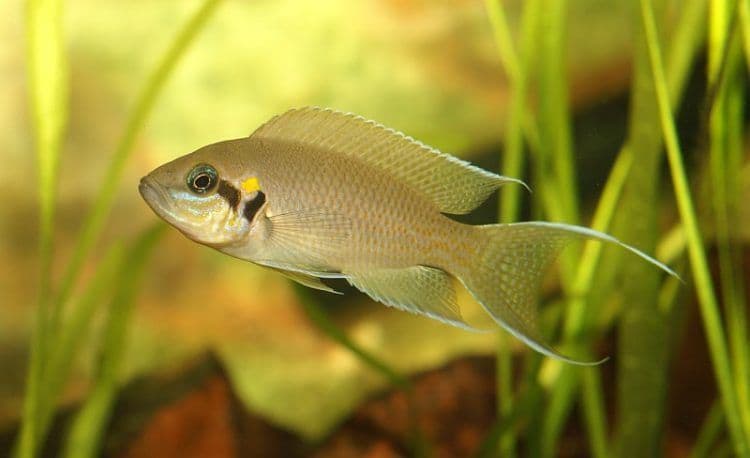
This beautiful fish with its lyre-tail was once known as ‘The Princess of Burundi.’ It comes from the Burundi area of Lake Tanganyika. The fish was first introduced to North America in 1971 by Pierre Brichard. The males can grow to five inches and the females to three inches. They thrive in water between 76ş-82ş F. They do very well in hard water. These fish are monagomous and pair for life. They will tend their eggs and spawn for several months, and will watch over several spawns at a time.
I keep mine in a 25 gallon tall tank. The bottom is gravel three inches deep. My summer home is on Lake Erie. I brought home some pieces of pre-Cambrian shield rock and stacked them in one corner of the tank. The pair that I had immediately made this area their home. After about a month they excavated their corner by digging all the gravel out from under the rocks. They hollowed out an area five by eight inches. They took every piece of gravel out and left themselves a bare glass bottom. The female laid her eggs on the rock on the side of the cave. The eggs hatched and I had at least fifty young. I left them in the tank and they raised them, with twenty surviving. This was my first success with brichardi.
I was told that the couple will only breed again when the nest is vacated. I purposely filled the nest back in with gravel and left ten of their young in the tank. About six months later the nest was dug out again and the adult couple let four of the ten youngsters stay in the new nest with them. I should mention that the young fish are about one and half inches long. The other six were banished to the opposite side of the tank. The couple are now guarding two hatches of fry that appear to be about three weeks apart in age. I would guess that there are about seventy fry.
I feed my fish an assortment of flake and pellet foods, as well as frozen blood worms and brine shrimp. I found my fish all started breeding when I started using earth worm flake food, which I obtained at the Brampton Aquarium Club auction.
I highly recommend this fish to everyone, especially beginners, as it is easily bred and a beautiful fish.
Leave a Reply